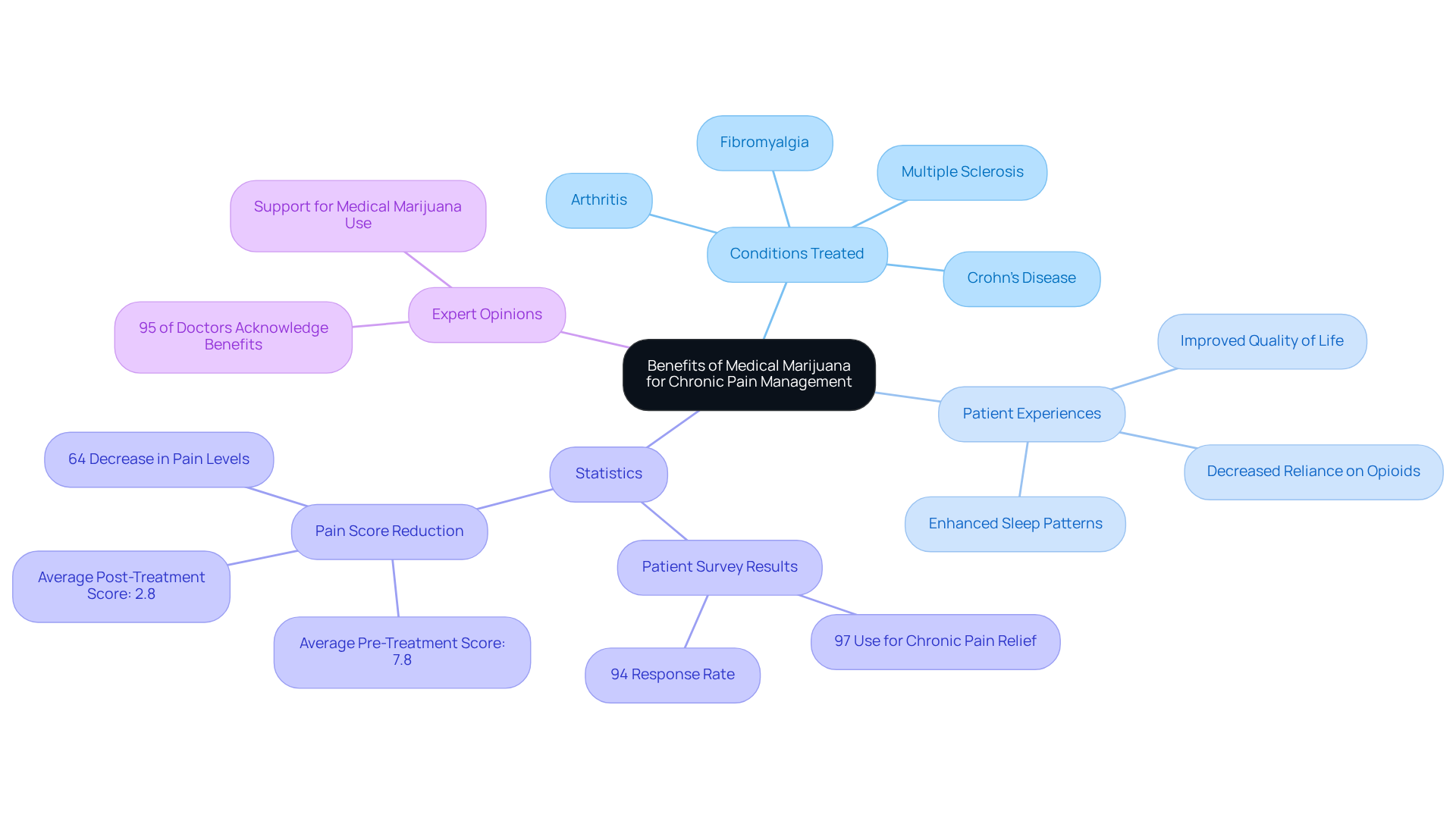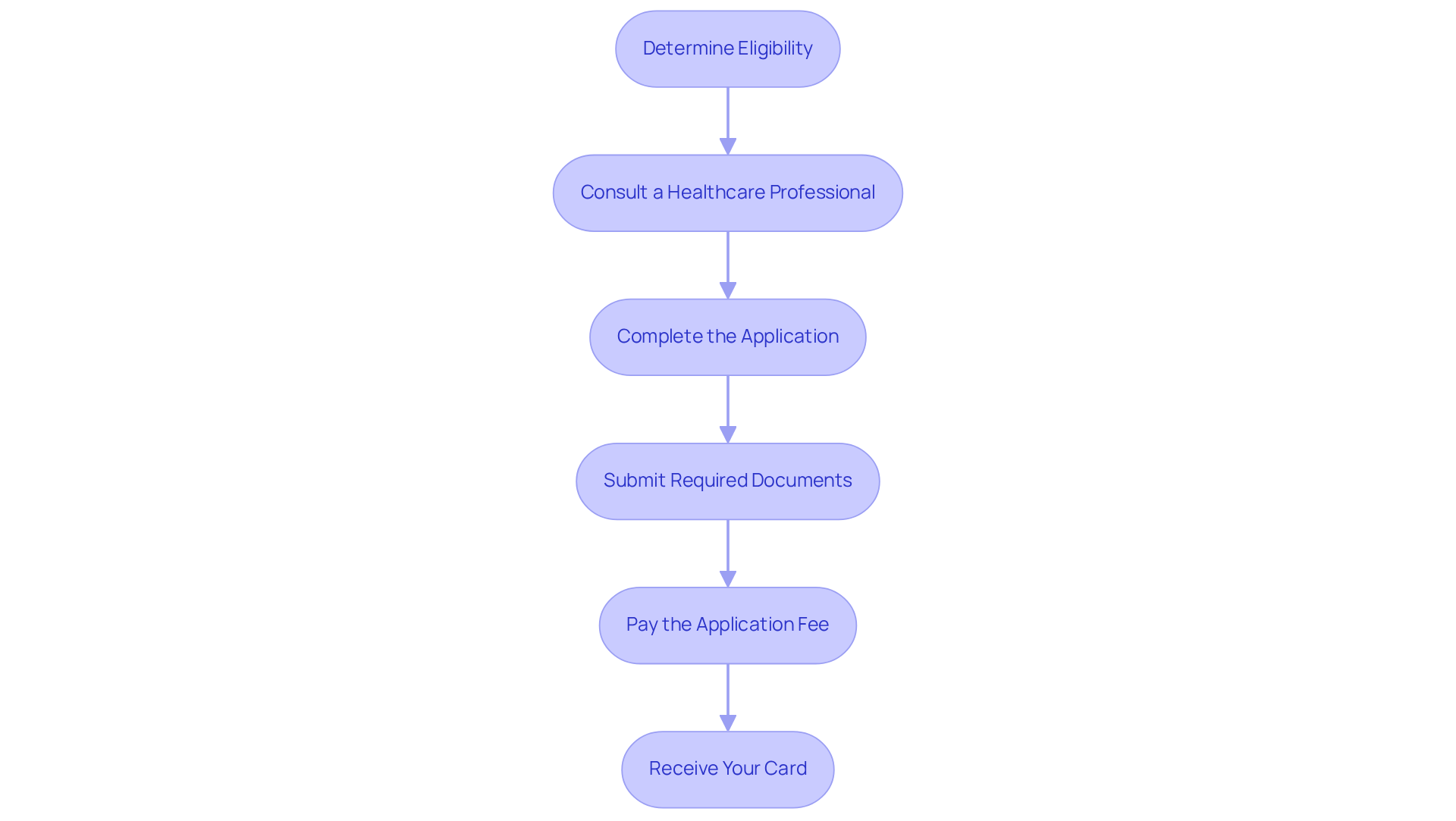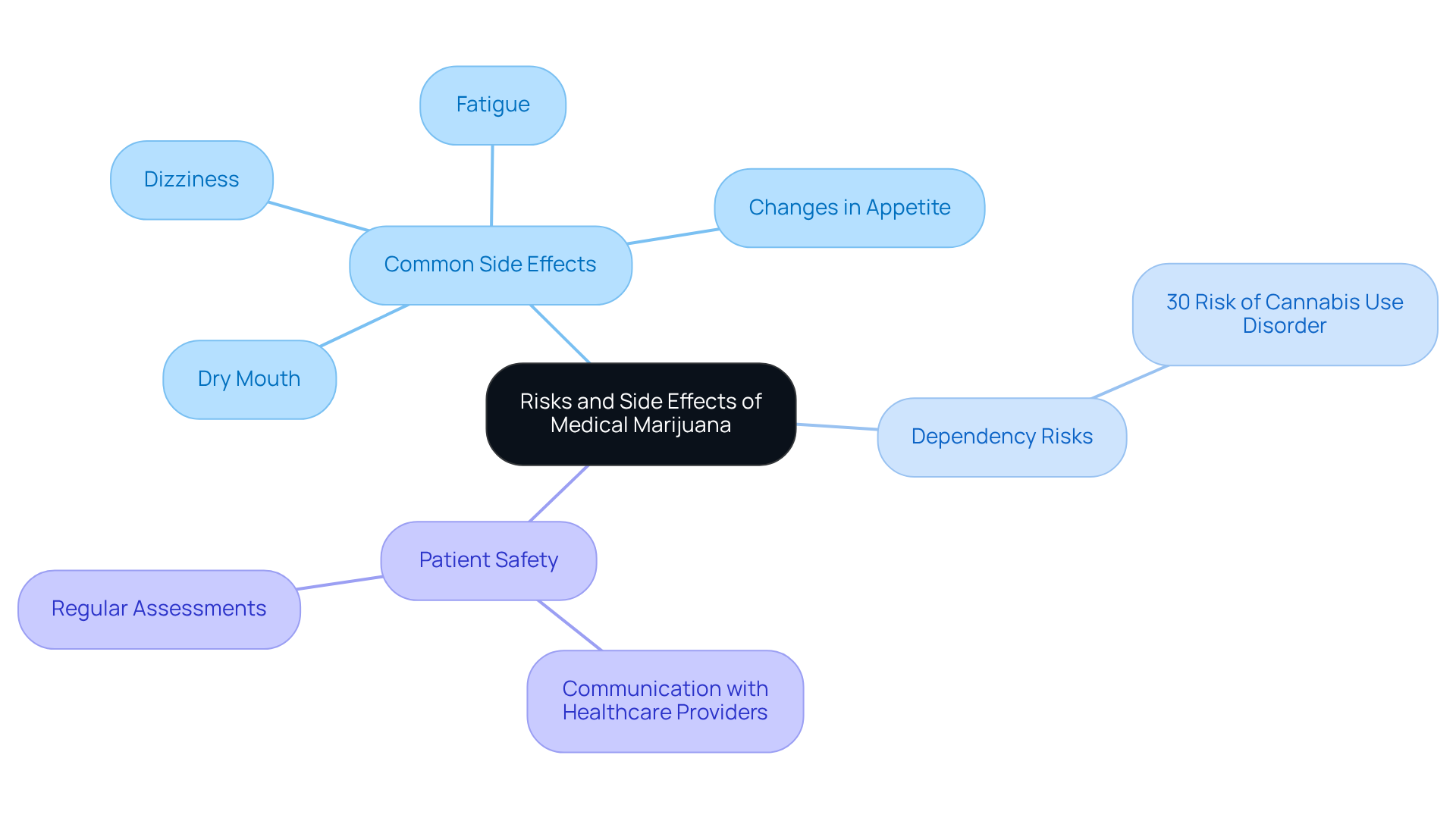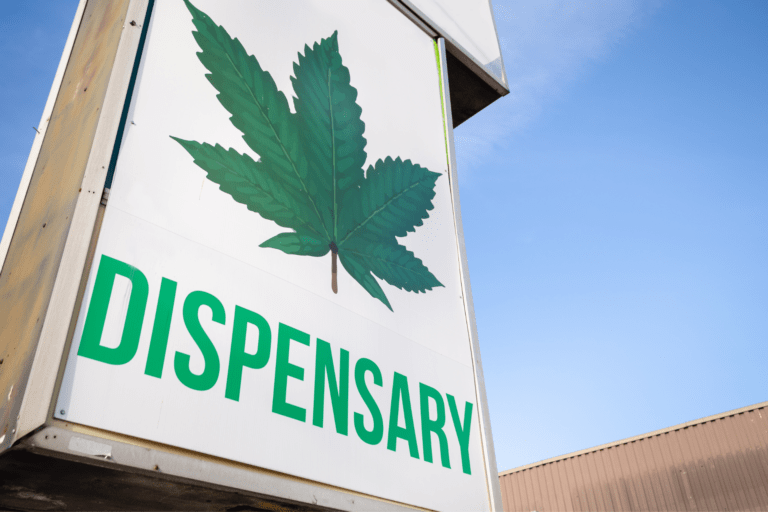Navigating Arizona Medical Marijuana: Benefits, Risks, and Card Steps
by Maya Green · July 24, 2025
Explore the benefits, risks, and steps for obtaining Arizona medical marijuana.

Overview
This article explores the benefits, risks, and steps involved in obtaining a medical marijuana card in Arizona, with a compassionate focus on its therapeutic uses for conditions such as chronic pain. It’s important to recognize that while medical marijuana can significantly enhance the quality of life for many patients, understanding the legal complexities and potential side effects is crucial.
You may find that navigating this process can feel overwhelming, but rest assured, you are not alone. Engaging with healthcare professionals who are knowledgeable about medical marijuana can provide you with the support and guidance you need. This journey is about prioritizing your well-being and making informed choices.
Ultimately, the goal is to empower you to make decisions that align with your health needs. By taking the time to understand the legal framework and seeking professional advice, you can ensure a safe and effective experience with medical marijuana. Remember, your health and comfort are paramount, and there are resources available to help you along the way.
Introduction
Navigating the world of medical marijuana in Arizona can feel overwhelming, filled with benefits, risks, and legal considerations that may leave you feeling uncertain. Since the establishment of the Arizona Medical Marijuana Act in 2010, patients with qualifying conditions have gained access to therapeutic cannabis. However, understanding the nuances of this law is essential for ensuring safe and effective use.
As you explore this path, you might wonder: what are the genuine advantages of medical marijuana for managing chronic pain, and what potential risks should you keep in mind?
In this article, we will walk you through the essential steps for obtaining a medical marijuana card, the therapeutic benefits it can provide, and the important safety considerations that accompany its use. Together, we can navigate this journey toward relief and well-being.
Define Medical Marijuana and Its Legal Status in Arizona
Medical treatments involving herbal substances, including cannabinoids, are designed with therapeutic intentions in mind. In Arizona, the Arizona Medical Marijuana Act, enacted in 2010, lays the groundwork for regulating therapeutic cannabis. This law empowers individuals with specific qualifying conditions—such as chronic pain, anxiety, epilepsy, and cancer—to obtain a marijuana card, enabling them to purchase marijuana from authorized dispensaries. As of January 2025, approximately 88,579 active users of Arizona medical marijuana reflect a significant community benefiting from this law. It’s noteworthy that the number of active cannabis users peaked at nearly 300,000 in January 2021 but has since declined to 113,000 by January 2024, illustrating the fluctuations in registrations over the years.
While medical cannabis is legal at the state level, it remains illegal under federal law, which can present potential legal risks for patients. This is especially crucial for those who may travel outside Arizona or interact with federal agencies. It’s important to remember that the Act permits the possession of up to 2.5 ounces of usable marijuana every 14 days and allows for the cultivation of up to 12 plants for patients living more than 25 miles from a dispensary. Additionally, the excise tax revenue generated from marijuana sales underlines the economic impact of the Arizona medical marijuana program on various state services. Understanding these guidelines is essential for patients to navigate the complexities of therapeutic herb usage securely and lawfully.
Furthermore, individuals with minor cannabis convictions may apply for expungement, offering an opportunity for those affected by past legal issues to seek relief. As specialists note, “THC itself has demonstrated therapeutic advantages in specific formulations,” emphasizing the importance of understanding both the healing and legal landscapes surrounding medicinal cannabis. You may find that becoming informed about these aspects can empower you to make the best decisions for your health and well-being.
Explore the Benefits of Medical Marijuana for Chronic Pain Management
Medical cannabis has emerged as a compassionate choice for individuals grappling with chronic pain and inflammatory conditions. Cannabinoids, particularly THC and CBD, interact with the body’s endocannabinoid system, providing relief from pain and reducing inflammation. It’s important to note that recent studies suggest therapeutic cannabis can be especially beneficial for conditions like arthritis, fibromyalgia, Crohn’s disease, and multiple sclerosis. For instance, a 2023 survey revealed that 97% of therapeutic marijuana patients primarily use it for chronic pain relief, experiencing an impressive average pain score reduction from 7.8 to 2.8—a significant 64% decline in pain levels.
Many patients share that incorporating cannabis into their pain management strategies has led to an enhanced quality of life, improved sleep patterns, and a decreased reliance on opioid medications. You may find it comforting to know that a 2022 study from Israel found marijuana use resulted in minimal side effects while significantly lowering pain levels. Additionally, expert opinions underscore the therapeutic potential of cannabinoids; nearly 95% of doctors acknowledge the health benefits of cannabis and express willingness to prescribe it.
To fully harness the benefits of Arizona medical marijuana, it’s essential to consult with healthcare professionals who can recommend the most suitable strains and dosages tailored to your specific needs. This personalized approach ensures that you can manage your pain effectively and safely. Many patients have shared transformative experiences with Leafy DOC, highlighting the compassionate and accessible care they received, which has greatly improved their quality of life. Remember, you are not alone in this journey, and there are supportive options available to help you find relief.
Guide to Obtaining a Medical Marijuana Card in Arizona: Steps and Requirements
If you’re considering obtaining an Arizona medical marijuana card, Leafy DOC’s telehealth services can guide you through this important process. Here are the essential steps to help you along the way:
-
Determine Your Eligibility: First, it’s vital to confirm that you are at least 18 years old and have a qualifying health condition recognized by Arizona law, such as chronic pain, PTSD, or severe nausea. Understanding your eligibility is the first step toward relief.
-
Consult a Licensed Healthcare Professional: Schedule an appointment with a certified doctor who specializes in cannabis. With Leafy DOC, you can conveniently arrange your cannabis certification assessment from the comfort of your home. Simply submit an intake form with your personal details and ID, and connect with a compassionate physician via phone call or video chat in just minutes.
-
Complete the Arizona medical marijuana application: After receiving a recommendation from your physician, it’s time to fill out the Arizona Department of Health Services (ADHS) application online. You will need to provide personal information, proof of residency, and your doctor’s recommendation. Remember, this is a step toward better health.
-
Submit Required Documents: Be sure to include a copy of your Arizona driver’s license or ID, a passport-sized photo, and any additional documentation requested by the ADHS. Gathering these documents can feel overwhelming, but you’re not alone in this process.
-
Pay the Application Fee: The application fee is $150 for qualifying patients, with a reduced fee of $75 for SNAP-eligible individuals. This fee may vary for renewals, so it’s good to check the latest information. Investing in your health is a significant step forward.
-
Receive Your Card: Once your application is processed, you can generally expect to receive your cannabis card through the postal service within 24-48 hours. However, please note that Arizona may take up to 5 business days to process applications. This card will empower you to purchase Arizona medical marijuana from authorized dispensaries throughout the state.
As of August 2023, Arizona has issued over 148,958 health-related cannabis registration cards, highlighting the growing acceptance and utilization of Arizona medical marijuana in the state. You can expect to receive notifications about your application status within 10 working days after submission. If you do not possess valid health records, patients can opt to supply health records or undergo an examination. Remember, you’re taking a brave step towards enhancing your well-being, and support is available every step of the way.
Assess the Risks and Side Effects of Medical Marijuana Usage
While Arizona medical marijuana can offer significant relief for chronic pain, it’s important to recognize the potential risks and side effects that may arise. Common side effects can include:
- Dizziness
- Dry mouth
- Fatigue
- Changes in appetite
Some individuals might also experience increased anxiety or paranoia, especially when using high-THC strains. Research suggests that long-term use could lead to dependency in some, with around 30% of cannabis users potentially developing cannabis use disorder.
Patient safety is a primary concern, particularly since the prevalence of side effects can vary widely among users. As we look ahead to 2025, ongoing studies reveal that many cannabis users report negative effects, underscoring the need for careful oversight. It’s essential for you to engage in open discussions with your healthcare provider about your medical history and any concerns you may have. This collaborative approach allows for the customization of treatment plans that effectively manage risks while maximizing therapeutic benefits.
Regularly assessing your usage and adjusting dosages as necessary can further enhance your safety and treatment outcomes. Remember, you are not alone in this journey, and taking these steps can help ensure that your experience with Arizona medical marijuana is as beneficial as possible.
Conclusion
Navigating the landscape of medical marijuana in Arizona can feel overwhelming, yet it offers a multifaceted approach to health and wellness that intertwines legal, therapeutic, and personal dimensions. The Arizona Medical Marijuana Act serves as a guiding framework, allowing individuals suffering from qualifying conditions to find relief through regulated cannabis use. It’s important to remember that understanding the legal complexities, along with the potential benefits and risks of medical marijuana, is essential for making informed decisions.
The significant advantages of medical marijuana, especially in chronic pain management, cannot be overlooked. Studies have shown substantial improvements in pain levels and quality of life for many patients. The process of obtaining a medical marijuana card is clearly outlined, empowering individuals to take actionable steps toward accessing this treatment. However, you may find it equally important to consider the potential side effects and risks associated with cannabis use. Open communication with healthcare providers is crucial to tailor approaches that maximize benefits while minimizing any adverse outcomes.
Ultimately, your journey toward utilizing medical marijuana in Arizona requires careful consideration and informed choices. As the community continues to grow and evolve, I encourage you to seek out resources, consult with professionals, and stay informed about the changing legal landscape. Embracing this knowledge not only enhances your personal well-being but also contributes to a broader understanding of the role of medical marijuana in modern healthcare. Remember, you are not alone in this journey; support is available, and together, we can navigate these changes with confidence.
Frequently Asked Questions
What is medical marijuana?
Medical marijuana refers to the use of herbal substances, including cannabinoids, for therapeutic purposes to treat specific medical conditions.
What is the legal status of medical marijuana in Arizona?
Medical marijuana is legal in Arizona under the Arizona Medical Marijuana Act, enacted in 2010. This law allows individuals with qualifying conditions to obtain a marijuana card and purchase marijuana from authorized dispensaries.
What conditions qualify for obtaining a medical marijuana card in Arizona?
Qualifying conditions include chronic pain, anxiety, epilepsy, and cancer.
How many active medical marijuana users are there in Arizona?
As of January 2025, there are approximately 88,579 active users of medical marijuana in Arizona.
How has the number of medical marijuana users in Arizona changed over the years?
The number of active cannabis users peaked at nearly 300,000 in January 2021 but declined to 113,000 by January 2024, showing fluctuations in registrations.
What are the possession and cultivation limits for medical marijuana patients in Arizona?
Medical marijuana patients in Arizona can possess up to 2.5 ounces of usable marijuana every 14 days and cultivate up to 12 plants if they live more than 25 miles from a dispensary.
Is medical marijuana legal at the federal level?
No, while medical marijuana is legal in Arizona, it remains illegal under federal law, which can pose legal risks for patients, especially when traveling outside the state or interacting with federal agencies.
What economic impact does the Arizona medical marijuana program have?
The excise tax revenue generated from marijuana sales contributes to various state services, highlighting the economic impact of the Arizona medical marijuana program.
Can individuals with minor cannabis convictions seek relief?
Yes, individuals with minor cannabis convictions may apply for expungement, providing an opportunity to address past legal issues.
What therapeutic advantages does THC offer?
THC has demonstrated therapeutic advantages in specific formulations, underscoring the importance of understanding both the healing and legal aspects of medicinal cannabis.
Last Updated: July 23, 2025
Get Approved for Your Medical Marijuana Card in Minutes!

Get Your Medical Card
Connect with a licensed physician online in minutes
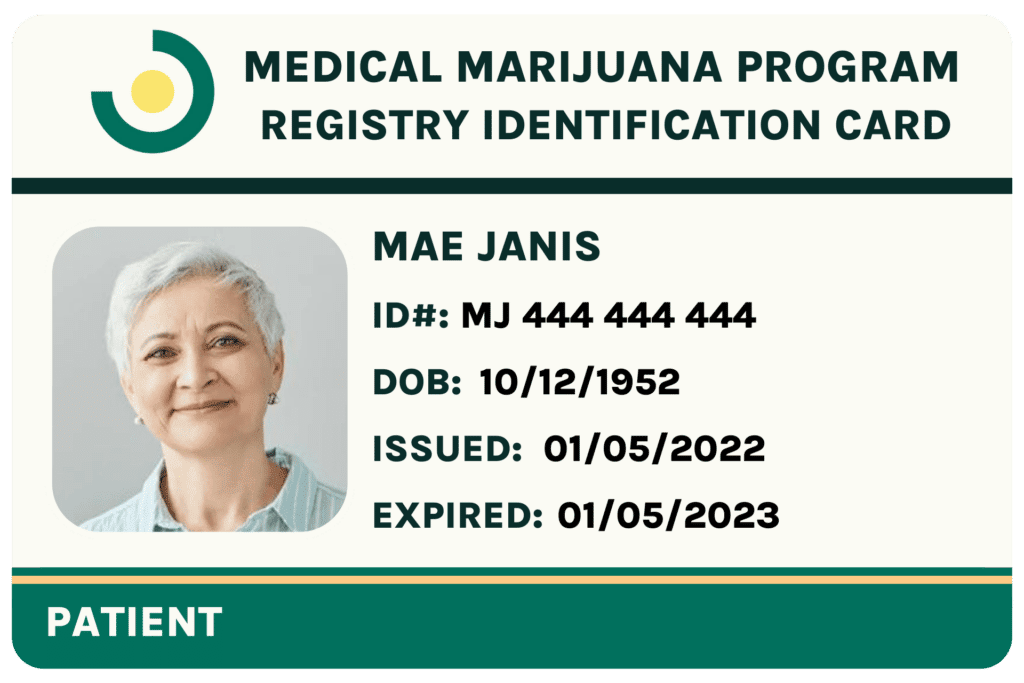
Like This Article?
Share with your friends
Table of Contents
Keep Reading
-
Is Cannabis an Aphrodisiac?
Looking for a way to spice up your bedroom? Cannabis may be the answer. Check out our roundup of the best weed strains for sex.
-
Find Your Perfect PA Medical Marijuana Dispensary: A Comprehensive Guide
Explore the best medical marijuana dispensaries in PA. Learn about different strains, products, and prices. Find the right dispensary for you.
-
Exploring The Functions Of The Endocannabinoid System
Unleash the Power of Your Body with Endocannabinoid System Functions! Uncover the Secrets and Discover Incredible Potential. Click Now to Explore and Tap into Your Hidden Powers Today!


